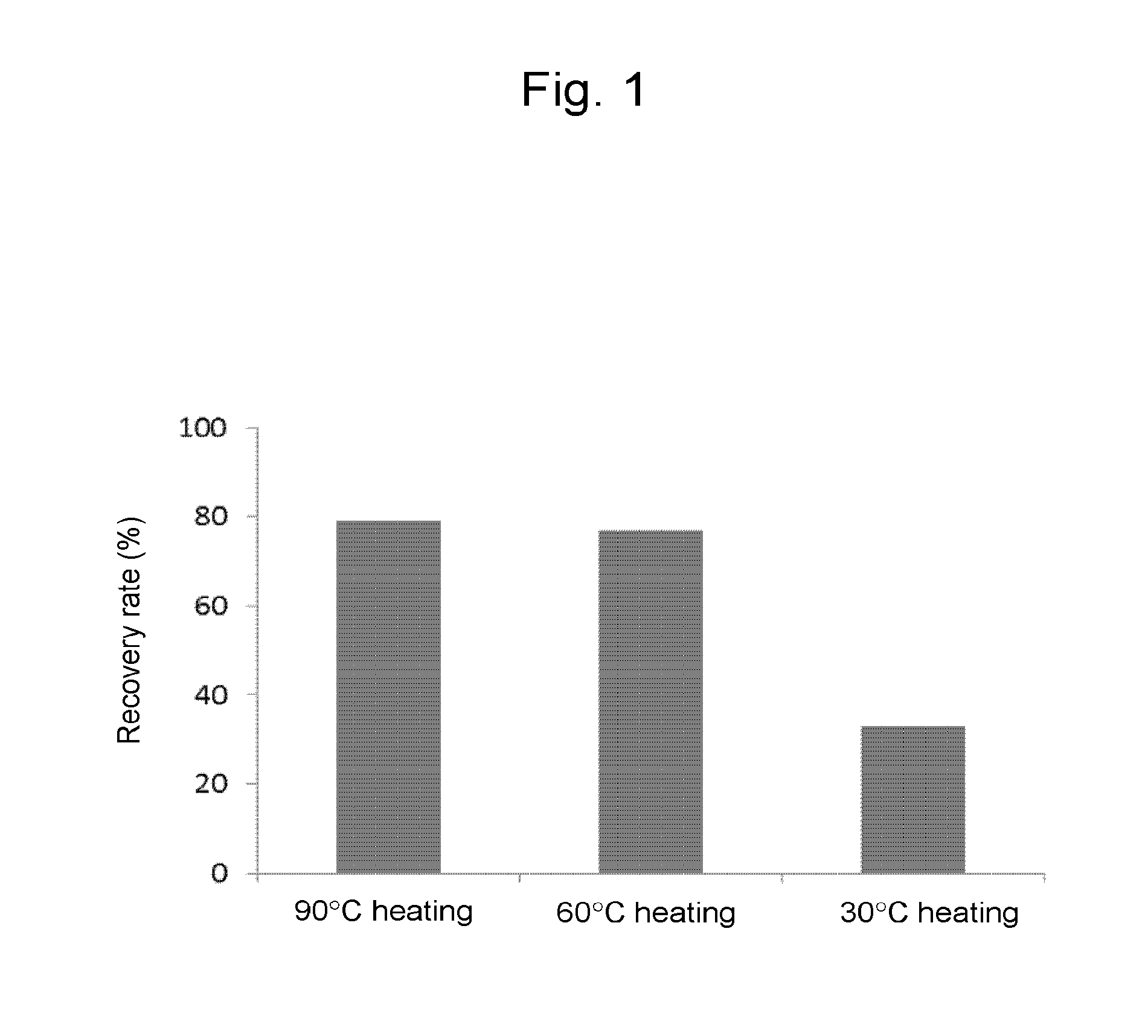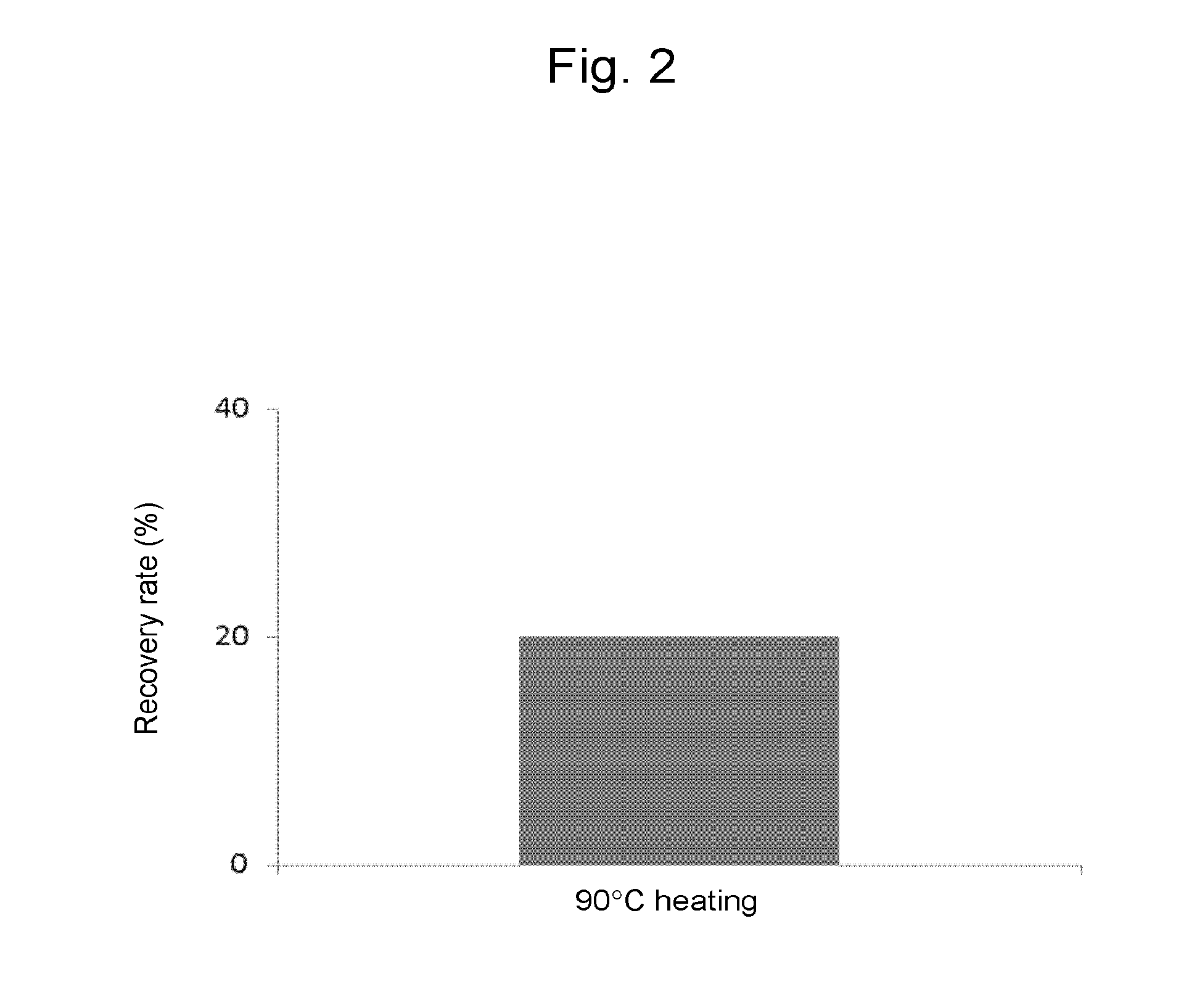Method for recovering proteins from waste water discharged during process of producing fish meat processed product
- Summary
- Abstract
- Description
- Claims
- Application Information
AI Technical Summary
Benefits of technology
Problems solved by technology
Method used
Image
Examples
example 1
Recovery of Water-Soluble Proteins from Fish Paste Waste Liquid and Properties of the Recovered Proteins
(Method)
[0057]It was attempted to recover water-soluble proteins from water leaching waste liquid of fish paste. Leaching waste water (200 L) generated in the water leaching step of removing fat content and blood components was sampled upon production of Alaska pollack fish paste. The pH of each sample was adjusted to 5.0 using concentrated hydrochloric acid to precipitate water-soluble proteins. A tank in which the pH of waste liquid was adjusted was provided with steam pipes. Waste liquid was heated by introducing steam into the pipes to cause flocculation. After heating until the sample temperature reached 30° C., 60° C., or 90° C., each sample was supplied to a decanter centrifuge for solid-liquid separation. The measured values of solid contents recovered at different heating temperatures were as follows: 30° C. heating: 1.5 kg; 60° C. heating: 14.5 kg; and 90° C. heating: 6....
example 2
Recovery of Water-Soluble Proteins from Stick Water
(Method)
[0059]It was attempted to recover water-soluble proteins from stick water. Stick water is waste liquid that is generated upon production of fishmeal from residue such as heads, backbones, and visceral organs obtained through the production of fish paste or fillets. The pH of stick water (200 L) discharged as cooking water during steam cooking of residue obtained at an Alaska pollack fish paste factory was adjusted to pH 5.0 using concentrated hydrochloric acid to precipitate water-soluble proteins. A tank in which the pH of waste liquid was adjusted was provided with steam pipes. Steam was introduced into the pipes to heat waste liquid so as to cause flocculation. The heating temperature was set to 90° C. in consideration of conditions during the production process in practice. After the temperature reached to a predetermined level, the waste liquid was supplied to a decanter centrifuge for solid-liquid separation. The TS (t...
example 3
Comparison of General Components Between Water-Soluble Proteins Recovered Using the Method of the Present Invention and Those Recovered Using a Conventional Method
(Method)
[0061]General components of matter containing proteins that had been recovered using the following pretreatment for solid-liquid separation of water-soluble proteins from water leaching waste liquid with the use of a decanter were compared: (1) pH shift alone (pH 7.0→2.0 (adjusted with 3N hydrochloric acid)→5.0 (adjusted with 3N sodium hydroxide)); and (2) pH shift (pH 7.0→2.0→5.0)+90° C. heating. Further, the method of the present invention was compared with a conventional solid-liquid separation method involving pressure flotation, which comprises mixing a solution obtained after a pH shift with pressurized air to allow fine air bubbles to adhere to precipitated proteins, thereby separating the proteins from water (JP Patent Publication (Kokai) No. 2003-251365).
[0062]In addition, according to the method of the pr...
PUM
 Login to view more
Login to view more Abstract
Description
Claims
Application Information
 Login to view more
Login to view more - R&D Engineer
- R&D Manager
- IP Professional
- Industry Leading Data Capabilities
- Powerful AI technology
- Patent DNA Extraction
Browse by: Latest US Patents, China's latest patents, Technical Efficacy Thesaurus, Application Domain, Technology Topic.
© 2024 PatSnap. All rights reserved.Legal|Privacy policy|Modern Slavery Act Transparency Statement|Sitemap


